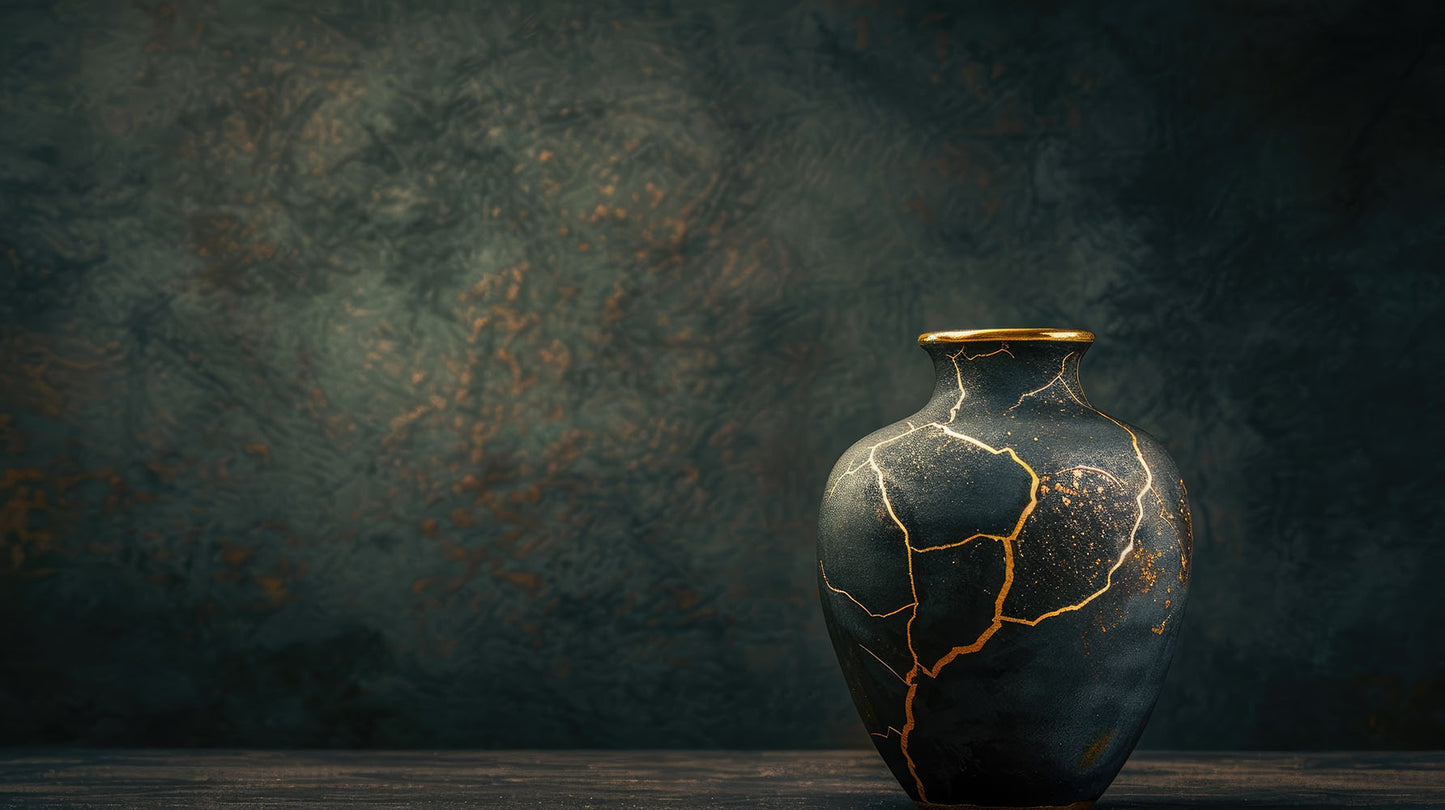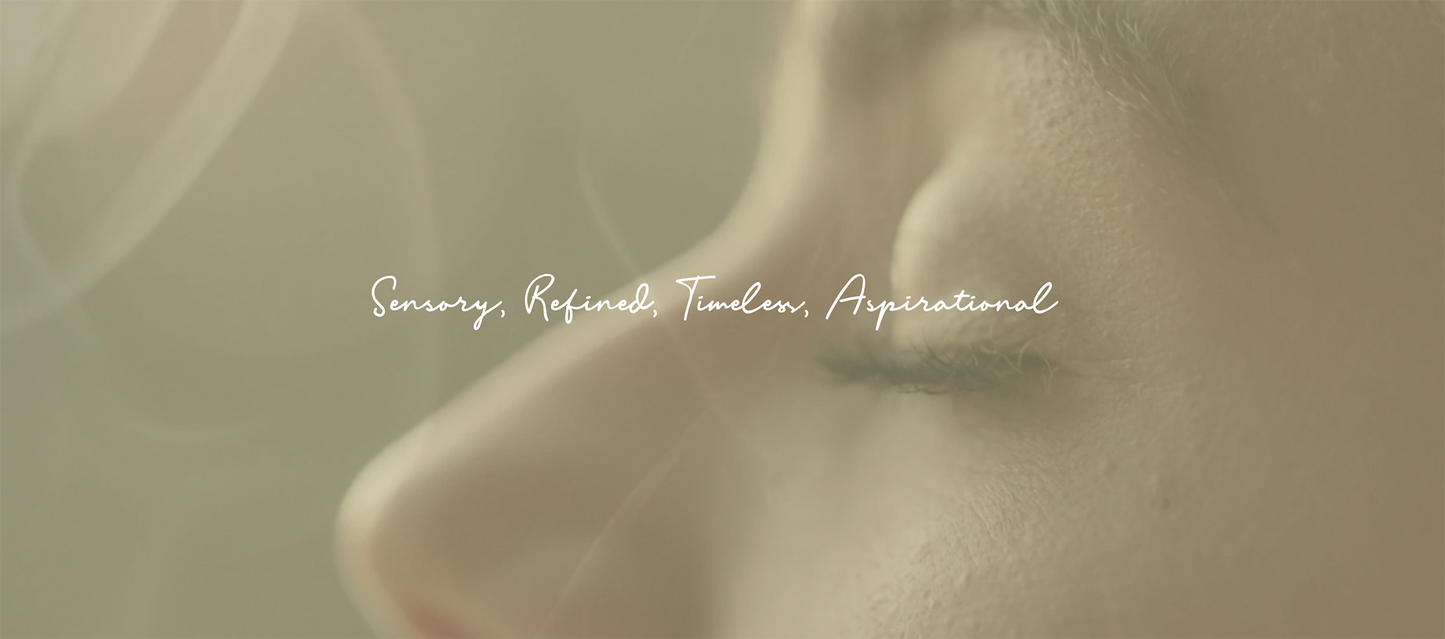
Kintsugi involves repairing broken pottery with lacquer that is mixed with powdered gold, silver, or platinum. Rather than hiding the fractures, Kintsugi celebrates them, transforming the restored object into a unique work of art where each crack and seam shines with a precious metal.
The Kintsugi technique does more than just restore the item's functionality; it also embraces and highlights its history, honoring the moments of breakage as part of the object's story. Kintsugi is deeply intertwined with the Japanese philosophies of wabi-sabi and mushin. Wabi-sabi finds beauty in imperfection, appreciating the transient and incomplete, while mushin encourages an acceptance of change and the impermanence of life.
By practicing Kintsugi, we are reminded that our flaws and scars contribute to our beauty and resilience. It is a gentle yet powerful reminder to cherish our own histories and to find elegance and strength in the places where we have been broken and healed.
Historical Background
The origins of Kintsugi are somewhat shrouded in mystery, but a popular story attributes its development to the late 15th century. According to this tale, Ashikaga Yoshimasa, a Japanese shogun, sent a damaged Chinese tea bowl back to China for repairs. When it was returned, the bowl was mended with unsightly metal staples, prompting Yoshimasa to seek a more aesthetically pleasing solution. Japanese craftsmen then devised the Kintsugi technique, which not only repaired the bowl but also enhanced its beauty by emphasizing the cracks with gold [2][4][6].

The Philosophy of Kintsugi
Kintsugi is more than just a method of repairing pottery; it is a philosophy that encourages us to embrace flaws and imperfections. This philosophy is closely related to *wabi-sabi*, which finds beauty in the imperfect, the transient, and the incomplete. Rather than hiding the damage, Kintsugi illuminates it, turning the object's history into a visually striking narrative. This approach challenges the Western notion of beauty, which often equates perfection with value.
The Process of Kintsugi
The Kintsugi process is meticulous and time-consuming, often taking several months to complete. Here are the basic steps involved:
- Preparation: The broken pieces of the pottery are carefully cleaned and dried.
- Joining: The pieces are glued together using a special lacquer known as *urushi*, derived from the sap of the Toxicodendron vernicifluum tree. This lacquer is highly adhesive and durable, making it ideal for the humid Japanese climate.
- Filling: Any missing parts of the pottery are filled in with a mixture of lacquer and other materials, such as cloth or powdered ceramics.
- Sanding: The repaired areas are sanded down to ensure a smooth surface.
- Decoration: Finally, the cracks are highlighted with a mixture of lacquer and powdered gold, silver, or platinum. This step not only reinforces the repair but also adds a touch of elegance and uniqueness to the object [4][6].
Kintsugi in Modern Times
While Kintsugi has its roots in ancient Japan, its principles and techniques have found relevance in modern times, particularly in the fields of art, psychology, and wellness. Contemporary artists like Tomomi Kamoshita and Yee Sookyung have incorporated Kintsugi-inspired techniques into their work, creating abstract sculptures and installations that celebrate imperfection and transformation.
In the realm of mental health and wellness, Kintsugi has become a powerful metaphor for resilience and recovery. The process of repairing broken pottery with gold serves as a poignant reminder that our scars and imperfections are not something to be hidden but celebrated. This perspective can be particularly helpful for individuals dealing with trauma, loss, or personal setbacks, offering a way to reframe their experiences and find strength in their vulnerabilities.

Kintsugi and Mindfulness
The practice of Kintsugi also aligns with mindfulness principles, encouraging individuals to be present and fully engaged in the process of repair. This mindful approach can foster a sense of calm and focus, helping practitioners to cultivate patience and acceptance. The act of carefully piecing together broken fragments and highlighting the cracks with gold can be a meditative experience, promoting a deeper connection with oneself and the present moment.
Kintsugi is a beautiful and profound art form that teaches us to embrace imperfection and find beauty in the broken. Its philosophy challenges conventional notions of beauty and encourages us to see value in our flaws and scars. Whether applied to pottery, personal growth, or mental wellness, Kintsugi offers a powerful reminder that our experiences, both good and bad, shape who we are and add to our unique beauty. As we navigate the complexities of life, the art of Kintsugi can inspire us to approach our own "cracks" with compassion, resilience, and a touch of gold.




